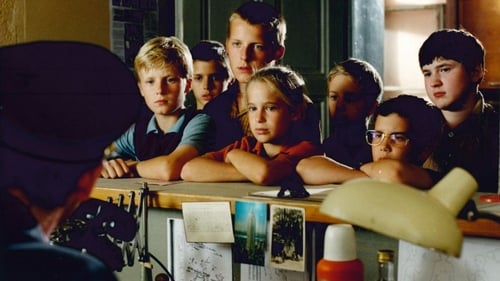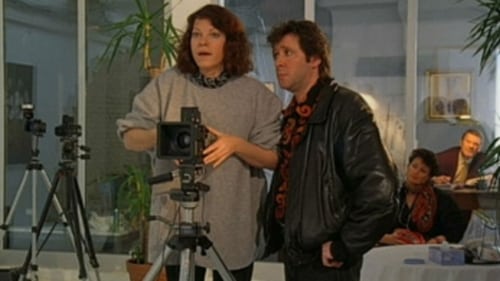
Costume Design
Austrian television director Fritz Lehner makes his feature debut with the big-budget drama Jedermann's Fest, based on the 1911 play by Hugo von Hofmannsthal, which in turn was based on a medieval tale. Originated in parts of England, the myth of Jan Jedermann ("John Everyman") deals with a rich man on his deathbed coming to terms with his life's failures. Not following much of a plot, the modernized version involves famous fashion designer Jedermann (Klaus Maria Brandauer) imagining his last big gala event while rendered unconscious as a result of a car accident in his Ferrari. He is a success in Vienna but not in fashionable Paris, so he wishes to impress French elder stateswoman Yvonne Becker (Juliette Greco).

Costume Design
Vienna, 1956. Viennese butcher Karl Bockerer goes to Hungary to buy meat. Along with his foster son and grandchild, he is caught up in the turmoil of the Hungarian revolt against the Soviet occupiers. With some luck and a great deal of cunning, Bockerer and his family manage to escape, but the Austrian border is closed - except for the bridge to Andau...

Costume Design

Costume Design
Two rival children groups are trying to find a three postal robbers who kidnapped a young girl.

Costume Design
Jan, a freelance journalist, and Sabine, the mother of his two children and a textile designer, have no money. Sabine is abandoned by her husband and then gets caught up in the bureaucracy.
A sober psychogram of a woman who is fighting and hoping for her life and everyday life.

Costume Design
Vienna, 1947. Bockerer and his wife Binerl have survived the war, though his butcher's shop was destroyed by bombs. Karl Bockerer opens up a new establishment in the center of the city. Post-war Vienna is divided into four zones in which the Allies run things and ensure that law and order prevails. This is the story of two lovers: Gustl, just returned form a POW camp, and the Russian interpreter Elena. Bockerer becomes the patron of their love. Elena's father was executed by Stalin, and the only way she can escape a similar fate is to marry an Austrian. Bockerer "buys" a husband for Elena and, full of tricks as ever, he succeeds in pulling the wool over the Russian occupier's eyes.

Costume Design
Lisa has grown up in an orphanage. She is looking forward to her adoption, as she doesn't know that her new parents are about to divorce. The Saber-toothed cat which she meets in a museum intervenes as a "feles ex machina".

Costume Design
Henriette, the buoyant wife of a politician leaves her ambitious husband in the middle of an election campaign and begins a new life. The fact that, as the still legally married wife of a public figure, she takes a job as a model for lingerie just can't go well.

Costume Design
Vienna 1934. Nora Fiala grows up in a middle class home. The atmosphere of her home and the political situation have their effect on her.

Costume Design
In the conclusion of Axel Corti's trilogy (following God Does Not Believe In Us Anymore and Santa Fe) Freddy, a Viennese Jew who emigrated to New York after Hitler's invasion, and Adler, a left-wing intellectual originally from Berlin, return to Austria in 1944 as soldiers in the U.S. Army. Freddy falls in love with the daughter of a Nazi, and Adler attempts to go over to the Communist Zone. But with the advent of the Cold War and continuing anti-semitism, the idealism of both characters is shattered as they find themselves surrounded by cynicism, opportunism, and universal self-deception. This acclaimed, brilliant work is one of the great films of all time.

Costume Design
A young man, the soldier and bachelor type, is looking for Anima - the eternal unattainable female who alternately appears as a virgin, harlot, mother, saint but also as a witch. In his illusions and visions made up of images which are multi-layered and ambiguous, Anima changes from a romantic ideal to a technically two dimensional duplicate which can be reproduced and is half woman, half sewing machine.

Costume Design
The authentic story of Maria Zechmeister who lived in an Upper Austrian village and was convicted of the murder of her husband. There was no evidence and no confession. Only rumors. Maria and the witnesses re-enact the trial before the camera. They tell about the marriage, the time the husband was a prisoner of war and his return from captivity. If he really had been poisoned or if she was a victim of injustice remains open. Maria Zechmeister was pardoned after serving 17 years in prison and lives in an isolated house at the outskirts of the village.










